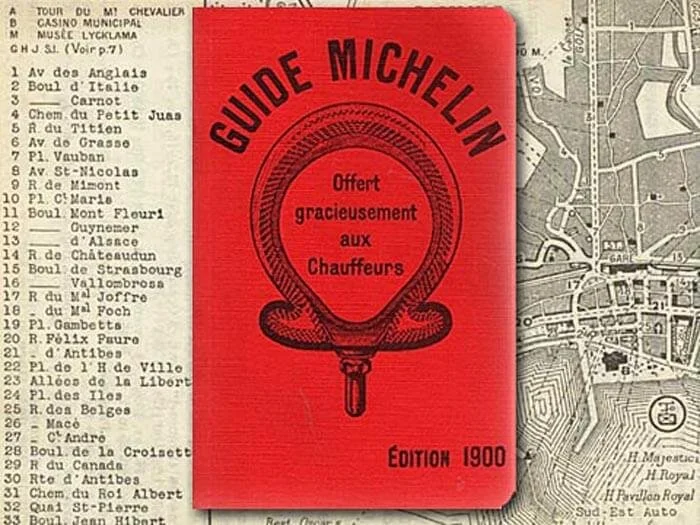The Michelin Guide: A Deep Dive into Culinary Excellence
How did a tire company become the most respected culinary authority in the world?
For over a century, the Michelin Guide has been more than just a restaurant rating system—it’s a global symbol of culinary prestige (and of marketing strategy, if you ask me). Restaurants that earn Michelin stars often experience a dramatic rise in reputation, sometimes even changing their future overnight. Chefs and restaurateurs hold the Michelin Guide in high regard for its rigorous, secretive inspection process and high standards.
In this article, we’ll uncover the fascinating history of the Michelin Guide, reveal the mysterious inspection process, explore the Bib Gourmand selection for affordable gourmet dining, and consider what the future holds for this culinary icon.
First edition of the Guide Michelin
The History of the Michelin Guide
To encourage travel and boost car and tire sales, the Michelin brothers created a small guidebook packed with useful information for motorists, including maps, tips on changing tires, gas station locations, and, for the weary traveler, a list of places to eat or stay overnight.
For the first 20 years, the guide was distributed for free. However, a pivotal moment came when André Michelin noticed a copy of the guide being used to prop up a workbench at a tire shop. This led to the realization that people value what they pay for, and in 1920, the Michelin Guide was relaunched with a price tag of seven francs.
In 1926, the guide introduced its famous star system, starting with a single star for noteworthy restaurants. By 1931, the ranking evolved to include zero, one, two, and three stars, and in 1936, the criteria for awarding these prestigious stars were formally established.
The Michelin Inspection Process
But how does a restaurant earn one of these valued stars?
Michelin inspectors—who remain strictly anonymous—are known for their thorough and secretive approach. These professionals, with backgrounds in food and hospitality, visit restaurants multiple times under the radar to ensure fair and unbiased reviews.
The process focuses on five main criteria:
Quality of ingredients: The freshness and provenance of products are essential.
Mastery of cooking techniques: The chef’s skill must be consistently evident in every dish.
Harmony of flavors: Each ingredient must work together to elevate the dish.
Expression of personality: How the chef’s vision comes through in the menu.
Consistency: Over time, the restaurant must maintain these standards.
It’s not just about a single outstanding meal. Michelin stars represent an unwavering dedication to excellence across the entire menu and over several visits. The anonymity of the inspectors, who never reveal their identity—even to their own families—adds to the allure and intrigue.
The Bib Gourmand Selection: Michelin’s Hidden Gems
While stars grab the headlines, the Bib Gourmand is Michelin’s nod to value dining. Created in 1997, this category celebrates high-quality, affordable meals, offering a great option for those looking to explore outstanding cuisine without the formality or price tag of a starred restaurant. Think of it as Michelin’s best-kept secret, highlighting restaurants that prioritize hearty, accessible dishes over gourmet flourishes.
These restaurants typically focus on local ingredients and regional specialties, often family-owned spots where the warmth of hospitality is just as important as the food on the plate. For food lovers and travelers alike, the Bib Gourmand list is a roadmap to some of the best-kept culinary secrets.
The Future of the Michelin Guide
As Michelin expands to new regions—from Thailand to Brazil and California—the guide is also adapting to modern challenges. The introduction of the Green Star in 2020 reflects a growing emphasis on sustainability. Restaurants awarded the Green Star are recognized for their commitment to eco-friendly practices, such as sourcing locally, minimizing waste, and reducing environmental impact.
This sustainable approach mirrors the rising interest in ecological commitment across the culinary landscape. As I explored in my article on Natural and Biodynamic Wines: Ecological Commitment at the Heart of French Art de Vivre, there is a strong movement toward responsible dining practices that prioritize sustainability and environmental responsibility.
As Michelin pushes forward, the future of the guide is about more than just food—it’s about leading the charge in sustainable, responsible dining. Whether through expanding into new territories or rewarding innovation, Michelin remains a key player in shaping the future of gastronomy.
Conclusion
The Michelin Guide exemplifies how a company can maintain its relevance even after 120 years. Through innovation and adaptation, it has evolved from a simple travel guide into a prestigious symbol of culinary excellence worldwide.
For those eager to explore its listed establishments, the Michelin app is an great tool. It allows users to discover top-rated restaurants and hidden gems, ensuring that every dining experience is of exceptional quality.
